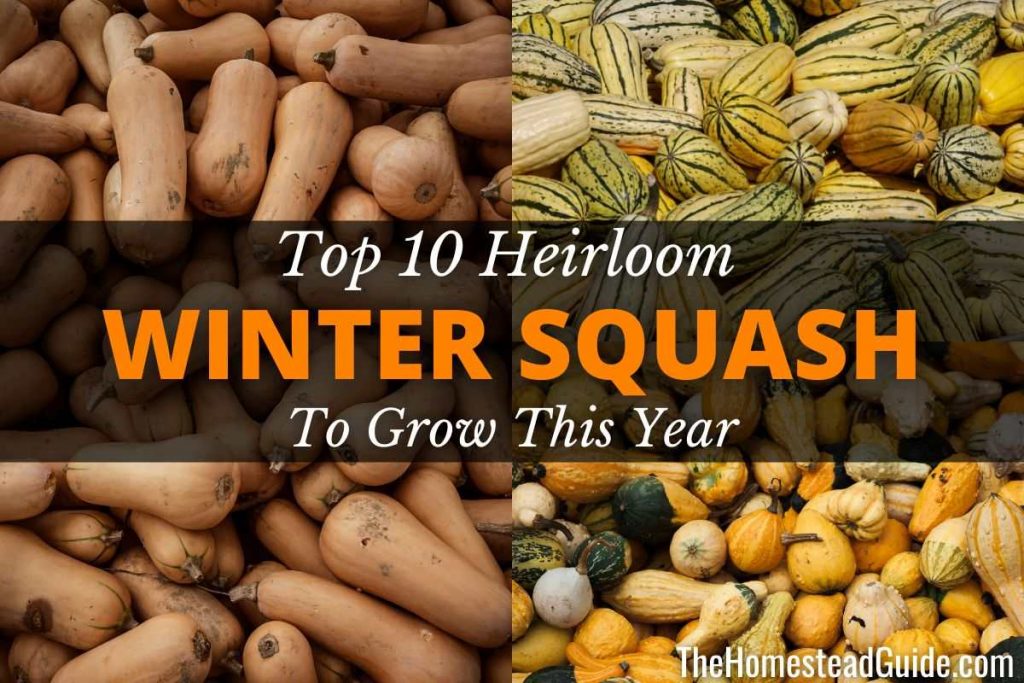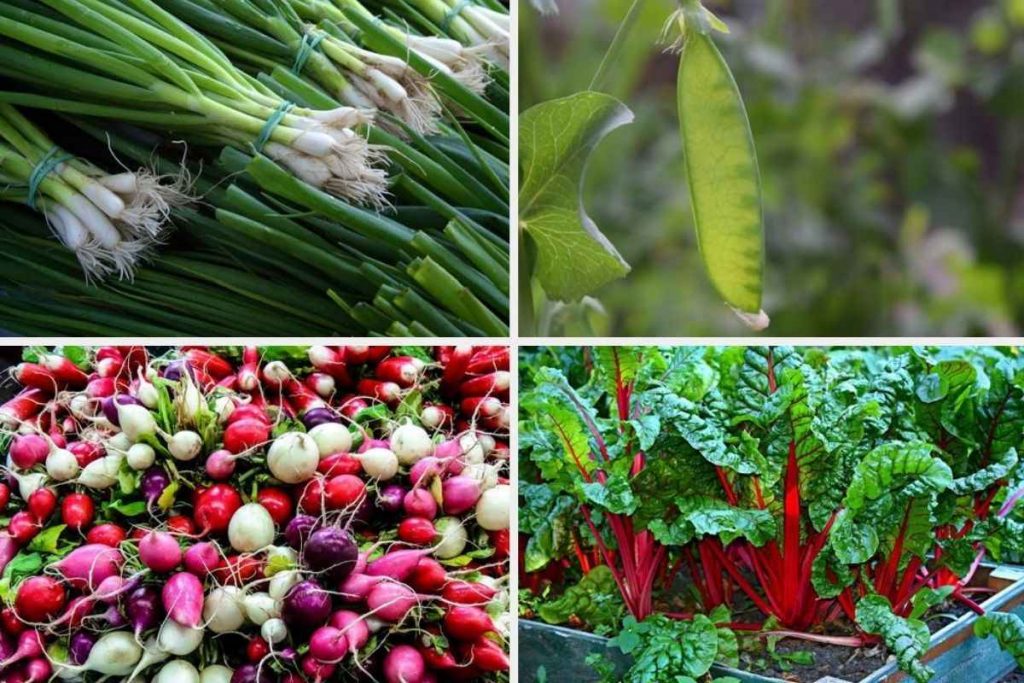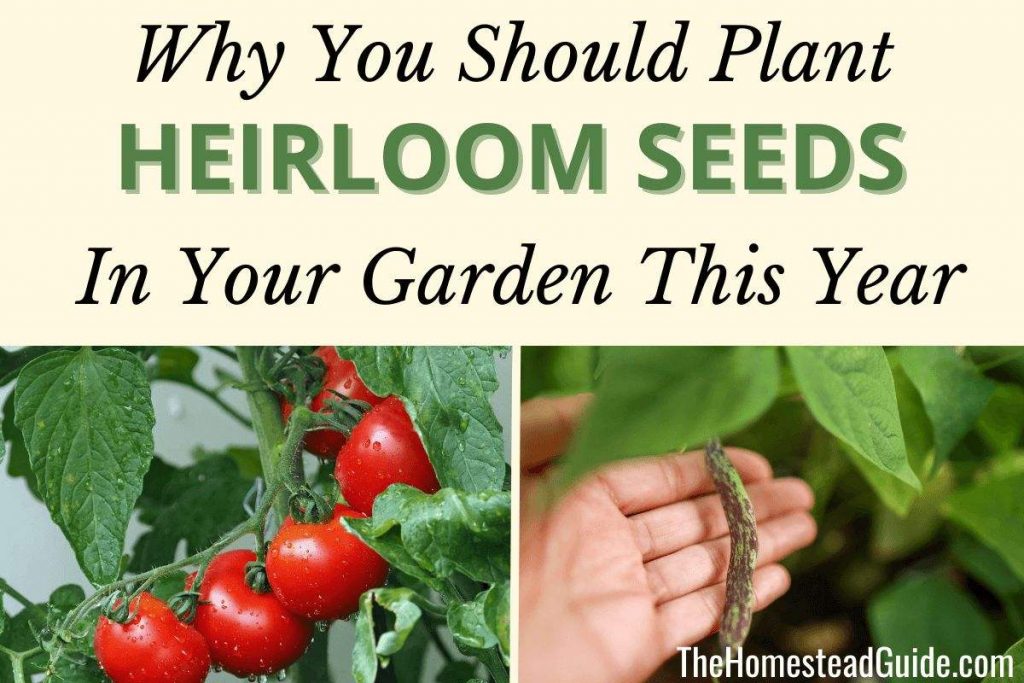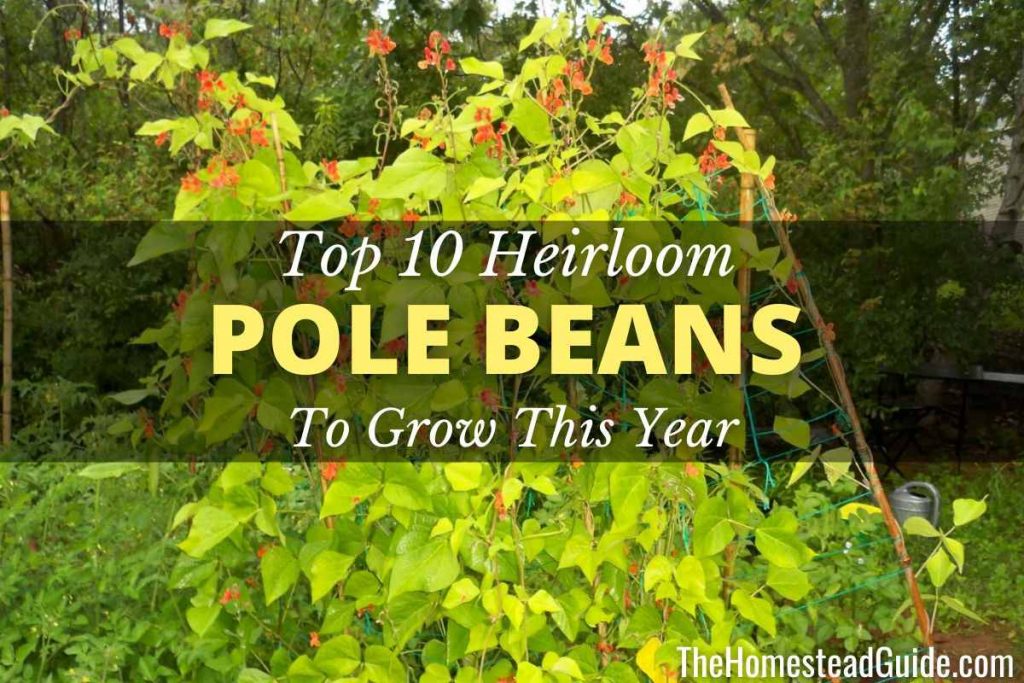If you’re a homesteader like me or a backyard gardener looking to grow the most “bang for your buck” crops, you can’t miss out on growing squash. Squash is one of the easiest crops to grow, the only drawback being that the plants take up a lot of space. Once you realize how much these plants actually produce, though, you won’t mind at all.
When you plant summer squash, you do so to enjoy it fresh during those long, hot summer days, but when you decide to plant winter squash, you do so to plan ahead and feed your family long after the gardening season is over.
Once it’s time to harvest your first year of winter squash, you’ll experience that satisfying feeling of abundance when you’re hauling in wheelbarrows full of healthy, delicious gourds at the end of the season to enjoy during the colder months.
And if you don’t want to have to buy new seeds or starts every year, why not grow some heirloom or open-pollinated varieties of winter squash? These varieties, unlike hybrids, are true to seed and you can save the seeds every year. Selecting the seeds from your best plants ensures a strong lineage of genetically identical plants so you never have to worry about a seed shortage or plant shortage ever again!
I know that there are so many heirloom varieties out there that you might not know where to start. But don’t worry – if you want the best heirloom winter squash to grow in your garden this year, I’ve got you covered. In this article, I go over my top 10 best heirloom winter squash to grow. Keep reading to learn more!
- Winter Squash vs. Summer Squash – What’s the Difference?
- Can Squash Cross Pollinate?
- 1. Blue Hubbard Squash
- 2. Table King Acorn Squash
- 3. Burgess Buttercup Squash
- 4. Delicata Winter Squash
- 5. Spaghetti Squash
- 6. Waltham Butternut Squash
- 7. Algonquian Squash
- 8. Kabocha Squash
- 9. Sweet Meat Winter Squash
- 10. Small Sugar Pumpkin (aka New England Pie Pumpkin)
- Conclusion
Winter Squash vs. Summer Squash – What’s the Difference?
When it comes to summer squash vs. winter squash, there are a few key differences to be aware of:
Summer squash, such as zucchini, is typically harvested when it is young and fresh. You can leave it to grow to massive proportions (especially if you want to save the seeds), but it tends to go woody and lose its flavor. Summer squash is also thinner-skinned and has a higher water content than winter squash. This means it can’t be stored as long as winter squash and should be eaten fairly quickly after harvesting.
Winter squash, such as butternut or pumpkin, takes time to mature on the vine and develop its natural sugars and flavors, and it has a hard, thick rind. The thick skin and lower water content means that it can be stored for quite a long time in a cool, dry spot in your house. Oftentimes, you can keep winter squash, as its name implies, through the winter.
Winter squash is harvested when the fruit is fully grown and mature. The skin of winter squash is thick and inedible, and the flesh is firm and dense. Common varieties of winter squash include acorn squash, butternut squash, and pumpkin. Winter squash can be roasted, baked, or mashed. It can also be used in sweet dishes such as pies or breads.
When it comes time to choose between summer squash and winter squash, it really depends on your personal preferences and what you plan to use the squash for. Both summer and winter squash can be eaten fresh, cooked, or canned.
Can Squash Cross Pollinate?
One word of advice when growing multiple types of squash: they can cross-pollinate very easily.
Squash are monoecious plants, meaning they produce both male and female flowers on the same plant. This makes them highly susceptible to cross-pollination when planted nearby other squash species. This can result in some interesting hybrids, but unfortunately, they are not always ideal. If you are growing heirloom summer squash in order to save the seeds, don’t worry! I found that this article is an excellent resource on avoiding cross-pollination between squash types. Some of the tips outlined include knowing which types cross-pollinate with others, covering and hand-pollinating blossoms, and planting squash weeks apart to create a gap between flowering periods.
1. Blue Hubbard Squash
This has become one of my favorites in the garden because of how large it grows and how versatile it is. This heirloom winter squash is excellent for long term storing. It can get massive – up to 15-40 lbs – so make sure you have the space to accommodate it! The thick outer rind is a unique blue-grey color, and the inside is a rich orange. This is a very versatile squash and can be used in any way you can think of. If you have the space, it’s a great choice to get the best bang for your buck!
Days to Maturity: 110
Size of Mature Fruit: 15-40 lbs
2. Table King Acorn Squash
Now let’s go in a complete opposite direction: what if you don’t have a lot of space to devote to a giant like the Blue Hubbard? This is where the Table King Bush Acorn Squash comes into play. This heirloom winter squash variety grows as a bush the way most summer squash do, and it’s perfect for smaller gardens and compact spaces. This is a classic heirloom variety that is well known for its nutty flavor, which actually improves with storage. Each plant gets about 3 feet in diameter and bears 5-8 acorn squash at about 1.5 lbs each. I’d highly recommend this one for any gardener!
Days to Maturity: 80
Size of Mature Fruit: 1.5 lbs
Available at Hoss Tools.
3. Burgess Buttercup Squash
This heirloom winter squash was first introduced in 1932 as a substitute for sweet potatoes. It’s been a long-time favorite among gardeners ever since! The outside is dark green and the inside is a beautiful golden yellow. The skin is thin but very hard, which is key for storing. It may not last as long as a hubbard or delicata, but you will be able to enjoy it at a Thanksgiving or Christmas dinner with family. These winter squash are delicious and rich in Vitamins A, B and C.
Days to Maturity: 95
Size of Mature Fruit: 4-5 lbs
4. Delicata Winter Squash
This squash is not only strikingly beautiful, but it is one of the sweetest winter squashes out there! It is a beautiful creamy yellow color with contrasting dark green stripes. The skin is thin and edible, so it is easy to work with and looks beautiful when served. The flavor is reminiscent of sweet potato and it is absolutely delicious when caramelized in the oven and sprinkled with cinnamon and a dash of salt!
Days to Maturity: 100
Size of Mature Fruit: 1-3 lbs
5. Spaghetti Squash
Spaghetti squash is becoming very popular as a low-carb substitute for spaghetti noodles. It really is amazing how well it goes with tomato-based sauces! If you’re like me and sometimes feel like eating a pile of spaghetti but don’t want to feel the bloating effects of all those carbs, you’ll love this one. The skin is extremely hard (making it last for months and months in storage), so be very careful when cutting it open. You can roast the halves cut-side down in the oven, or – an easier and quicker way – you can place the cut sides down on a plate and microwave on high for 10 minutes, being careful not to burn yourself from the steam when you take it out. Spaghetti squash can get a bit costly at the store since it’s sold by the pound, so why not grow your own heirloom variety and save the seeds for each subsequent year?
Days to Maturity: 80
Size of Mature Fruit: 5-7 lbs
6. Waltham Butternut Squash
This is probably the most widely grown butternut squash today. This heirloom winter squash is a classic variety and still remains the gold standard of all butternut squash varieties, continuously beating out newer, hybrid varieties. If you plan to grow butternut squash, definitely grow this one! The flesh is a beautiful golden orange with a sweet, nutty flavor. It’s excellent for storage and can actually become sweeter months after harvesting.
Days to Maturity: 105
Size of Mature Fruit: 6 lbs
Available at Hoss Tools.
7. Algonquian Squash
Algonquian squash is an heirloom winter squash variety from the New England area. It was originally grown by the Abenaki Native Americans, so you know it’s good and reliable! These squash resemble large, overgrown zucchinis but turn completely orange in storage. This is another versatile squash that goes great in most recipes and it lasts a long time when stored properly.
Days to Maturity: 100
Size of Mature Fruit: 3-5 lbs
Available at Hoss Tools.
8. Kabocha Squash
Kabocha is a Japanese variety of winter squash known as the Japanese pumpkin. It is widely considered as one of the best tasting squash of all time and the king of squash soups, because unlike traditional pumpkins, Kabocha is almost all flesh inside. The flesh inside is a creamy yellow/orange, and the skin is a beautiful dark green and is also edible. This is a wonderful squash to keep as a staple in your garden every year.
Days to Maturity: 95
Size of Mature Fruit: 3-4 lbs
9. Sweet Meat Winter Squash
This is a gorgeous heirloom winter squash variety that many people consider their favorite. It looks like a beautiful grey-green pumpkin with a fiberless orange flesh inside. This squash is one of the varieties that get sweeter during storage. Sweet Meat is another large squash that needs ample space to grow. Its rich, buttery flavor makes it excellent for baking and cooking.
Days to Maturity: 100
Size of Mature Fruit: 10-15 lbs
10. Small Sugar Pumpkin (aka New England Pie Pumpkin)
Finally, we have the king of all pie pumpkins. This is the gold standard heirloom pie variety that dates back to 1863 and is widely thought of as the original pie pumpkin. The thick, meaty flesh is sugar-sweet and absolutely perfect for baking and canning. If you’re looking for a pie pumpkin, look no further than this one.
Days to Maturity: 95
Size of Mature Fruit: 6-8 lbs
Conclusion
Nothing beats that satisfying feeling of abundance when you bring in pounds and pounds of winter squash at the end of the season. I love being able to grab a homegrown squash from the cellar on a cold, blustery fall day and whip up a comforting batch of apple and acorn squash soup or butternut squash fettuccini alfredo with brown butter and rosemary. Winter squash is just perfect for fall comfort foods.
What is your favorite heirloom or open pollinated winter squash? Let me know in the comments! Also, check out our top 10 heirloom summer squash to grow in your garden.
And if you’re looking to get started with homesteading and organic gardening, make sure to check out our Complete Guide to Organic Gardening and why you should plant heirloom seeds this year.
Thanks for reading!





